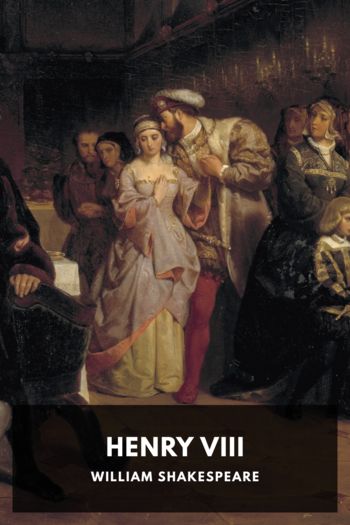Don Quixote by Miguel de Cervantes Saavedra (electric book reader TXT) 📕

Description
Don Quixote is a novel that doesn’t need much introduction. Not only is it widely considered the greatest Spanish literary work of all time, one of the greatest literary works in history, and a cornerstone of the Western literary canon, it’s also considered one of the first—if not the first—modern novels.
This Standard Ebooks edition is believed to be the first ebook edition of Don Quixote to feature a full transcription of translator John Ormsby’s nearly 1,000 footnotes. Ormsby as an annotator deftly explains obscure passages, gives background on the life and times of 1600s Spain, references decisions from other contemporary translators, and doesn’t hold back from sharing his views on the genius—and flaws—of Cervantes’ greatest work.
The story is of the eponymous Don Quixote, a country noble who, in his old age, reads too many chivalric romances and goes mad. After convincing his grubby servant, Sancho Panza, to join him as his squire, he embarks on an absurd and comic quest to do good and right wrongs.
Today Don Quixote’s two volumes are published as a single work, but their publication came ten years apart. Cervantes saw great success with the publication of his first volume, and appeared to have little desire to write a second volume until a different author wrote a spurious, inferior sequel. This kicked Cervantes into gear and he wrote volume two, a more serious and philosophical volume than the largely comic first volume.
Despite being written in 1605 and translated in 1885, Don Quixote contains a surprising amount of slapstick laughs—even for the modern reader—and narrative devices still seen in today’s fiction, including meta-narratives, frame narratives, and metafiction. Many scenes (like Quixote’s attack on the windmills) and characters (like Sancho Panza and Lothario) are so famous that they’re ingrained in our collective culture.
Read free book «Don Quixote by Miguel de Cervantes Saavedra (electric book reader TXT) 📕» - read online or download for free at americanlibrarybooks.com
- Author: Miguel de Cervantes Saavedra
Read book online «Don Quixote by Miguel de Cervantes Saavedra (electric book reader TXT) 📕». Author - Miguel de Cervantes Saavedra
The subject of the old ballad—De Mantua Salió el Marques (Duran’s Romancero General, No. 355); a chanson de geste, indeed, rather than a ballad, as it runs to something over 800 lines. Pellicer wrongly assigns it to Geronimo Trevifio, a sixteenth century author. It is in the Antwerp Cancionero of 1550 and the Saragossa Silva of the same date. ↩
From the words used by Cervantes he seems to have known or suspected that Montemayor was not the author of the romantic story of Abindarráez and Xarifa. It was inserted in the second edition of the Diana, the year of the author’s death, and it had previously appeared as a separate novel at Toledo. ↩
In the original the passage runs: “Who was even still sleeping. He asked the niece for the keys,” etc. It is a minor instance of Cervantes’ disregard of the ordinary laws of composition, and also a proof that at this stage of the work he had not originally contemplated a division into chapters. ↩
The romances of chivalry were, with not more than two or three exceptions, produced in the folio form, while the hooks of poetry, the pastorals, the cancioneros, and romanceros, were either in small quarto or much more commonly in small octavo corresponding in size with our duodecimo. ↩
The court the niece speaks of, was the patio or open space in the middle of the house; the corral or yard was on the outside. ↩
The curate was quite correct in his idea that Amadís of Gaul was the parent of the chivalry literature, but not in his statement that it was the first book of the kind printed in Spain, for it is not likely it was printed before Tirant lo Blanch, Oliveros de Castilla, or the Carcel de Amor. The earliest known edition was printed in Rome in 1519, but there can be no doubt that this is a reprint of a Spanish edition, of perhaps even an earlier date than 1510, which has been given as that of the first edition. ↩
Las Sergas (i.e. ιας ἔργα—the achievements) De Esplandián (1521) forms the fifth book of the Amadís Series, and is the composition of Montalvo himself, as is also, apparently, the fourth book of Amadís of Gaul. He only claims to have edited the first three. ↩
Amadís of Greece, by Feliciano de Silva (1535), forms the ninth book of the Amadís Series. Pintiquiniestra was Queen of Sobradisa, and Darinel was a shepherd and wrestler of Alexandria. The Spanish romances of “the lineage of Amadís” are twelve in number, and there are besides doubtful members of the family in Italian and French. ↩
Olivante de Laura, by Antonio de Torquemada, appeared first at Barcelona in 1564. Gayangos suggests that Cervantes must have been thinking of a later quarto or octavo edition, for the original folio is not so exceptionally stout as the description in the text implies. The Garden of Flowers (1575), a treatise of wonders natural and supernatural, was translated into English in 1600 as The Spanish Mandeville, a title which may seem to justify the curate’s criticism; but it does not come with a good grace from Cervantes, who made free use of the book in the First Part of Persiles and Sigismunda, and in the Second Part of Don Quixote. The book is really an entertaining one. ↩
The correct title is Historia del muy Animoso y Esforzado Principe Felixmarte de Hircania, but the hero is also called Florismarte. It was by Melchor Ortega de Úbeda, and appeared in 1556. ↩
Platir is the fourth book of the Palmerín Series. The hero is the son of Primaleon, and grandson of Palmerín de Oliva. Its author is unknown. It appeared first in 1533. ↩
The Knight of the Cross appeared in two parts: the first, under the title of Lepolemo, by an unknown author, in 1543; the second, with the achievements of Leandro el Bel, the son of Lepolemo, by Pedro de Luxan, in 1563. “Behind the Cross,” etc., Proverb 75, was evidently a favorite proverb with Cervantes. ↩
The Mirror of Chivalry—Espejo de Caballerias—was published at Seville in four parts, 1533–50. Next to the history of Charlemagne and the Twelve Peers, it was the most popular of the Carlovingian series of romances. It is creditable to Cervantes as a critic that he should have mentioned Boiardo as he does, at a time when it was the fashion to regard the Orlando Innamorato as a rude and semi barbarous production, only endurable in the rifacimento of Ludovico Domenichi. ↩
An Oriental mode of showing respect for a document. ↩
Geronimo Jiménez de Urrea, whose translation of Ariosto into Spanish was first printed at Antwerp in 1549. This is not the only passage in which Cervantes declares against translation. In Chapter LXII of the Second Part he puts his objection still more strongly, and there extends it to translation of prose. And yet of all great writers there is not one who is under such obligations to translation as Cervantes. The influence of Homer and Virgil would be scarcely less than it is





Comments (0)